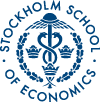No 19: Economic Growth and the Swedish Model
Magnus Henrekson, Lars Jonung () and Joakim Stymne
Additional contact information
Lars Jonung: Dept. of Economics, Stockholm School of Economics, Postal: Stockholm School of Economics, P.O. Box 6501, 113 83 Stockholm, Sweden
Abstract: We examine the growth performance of Sweden in the post-World War II period, focusing on explaining the relative decline of economic growth in Sweden since the early 1970s. The hypothesis that the relative decline is a consequence of productivity catch-up is rejected. A number of potential "ultimate" causes behind the slowdown are explored. An increasingly inefficient process of capital formation; a shrinking share of the economy being exposed to international competition; long-run negative effects of activist stabilisation policies; rapid growth of the public sector; deteriorating incentives for human capital formation; and weak incentives for implementing the results of R&D efforts are all part of the story. The evidence suggests that the incentive structure created by "the Swedish model" made Sweden less successful in adapting to the shocks of the 1970s and 1980s than other OECD countries.
Keywords: Catching up; convergence; economic growth; human capital; productivity; welfare state
76 pages, May 1994
Questions (including download problems) about the papers in this series should be directed to Helena Lundin ()
Report other problems with accessing this service to Sune Karlsson ().
RePEc:hhs:hastef:0019This page generated on 2024-09-13 22:19:40.

